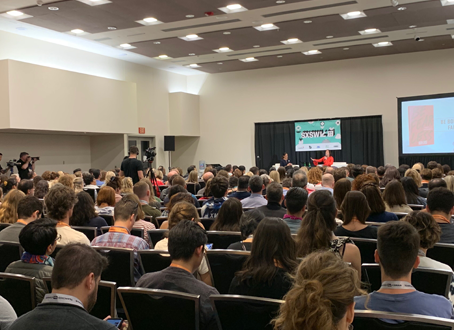Economic mobility is defined as the ability of an individual, family or some other group to improve (or lower) their economic status. This term has been featured more and more frequently in recent reports about education, employment, criminal justice and political institutions, and for good reason. According to recent research like the Pew Charitable Trust’s Economic Mobility Project, “the ability to move up the economic ladder from one generation to the next is more limited in the United States than many think.” In his recent novel, Our Kids: The American Dream in Crisis, Robert Putnam explains the correlation between the growing opportunity gap, another highly discussed topic, and stagnant economic mobility and the devastating effects it has had in declining American neighborhoods since the 1970s.
Last month, Emerging Practitioners in Philanthropy (EPIP) and the Case Foundation brought together multi-sector representatives to lead a conversation on this very topic. Given current reporting and statistics, the problem of economic mobility can seem insurmountable, but we wanted to focus on action-oriented opportunities. Our goal was to identify how organizations can start chipping away at some of the large and small elements of this growing problem of increasing inequality in social and economic opportunity.
So what did we learn?
Sarah Koch, senior director of Social Innovation at the Case Foundation; guest speaker Christopher Upperman, senior advisor at the U.S. Small Business Administration; and the EPIP members had a lively discussion about one particular opportunity gaining traction in communities across the country—the development of pathways to entrepreneurship. Three major themes surfaced over the course of the discussion on small business ownership and entrepreneurship, including: multi-sector, multi-lingual partnerships; examples of success that represent diverse demographics; and easier access to resources like startup capital.
Multi-Sector, Multi-Lingual Trust Building
Both Koch and Upperman stressed the importance of community-centric collaboration to implement strong entrepreneurial ecosystems. Together, the group addressed the reality that cross-sector partnerships are not easy to develop; however, for government and philanthropic efforts to be effective, local organizations are vital. Community organizations speak the language of the city and of the neighborhoods, and they bring credibility and community trust to programs. Koch specifically cited the dangers of only working from a perspective of privilege, which came up when evaluating some of the risks associated with small business ownership—loan default and loss of savings, both of which have very different implications depending on your socio-economic status. This point in the conversation reaffirmed the importance of including the voices of local organizations in philanthropic efforts.
Filling the Resource Gap
At age 18, Upperman started his own business, a communications company in Atlanta, GA. He achieved short-term success, but admits that his team lacked the management skills to sustain a business. This experience fuels his work at SBA with Millennials and young people of color because he understands what new entrepreneurs need to get from idea to launch to sustainability. For example, many new entrepreneurs’ initial funding comes from small business loans and friends and family. Meaning, if you don’t qualify for credit and have a low-income network, you can’t access this traditional startup capital—putting you behind before you even begin. So he is driven to connect these entrepreneurs to stronger capital and infrastructure resources.
Upperman mentioned some of SBA’s efforts aimed at filling these gaps, including work with local organizations and institutions like banks, community development financial institutions (CDFIs), universities, chambers of commerce and other nonprofits to help entrepreneurs access small business loans and financial and credit literacy training. These resources prepare new entrepreneurs to manage their businesses responsibly for greater longevity, providing the kinds of opportunities that Upperman, himself, lacked as a young entrepreneur.
The Need for Inspiration
Beyond capital and infrastructure, underrepresented groups often lack positive influence from relatable stories of inspiration. Upperman pointed out that right now most young people of color from poor backgrounds couldn’t identify a prominent success story involving a person that looks like them. These stories are hugely important in creating visions for their own success as entrepreneurs, or in any other field. Compared with the frequency and regularity that affluent young people engage with relatable “hero” images or success stories, lower-income youth of color are largely at a disadvantage. This gap presents an opportunity for both more investments and more reporting on entrepreneurs from a wider range of backgrounds.
It was exciting to see, over the course of the discussion, the number of new philanthropists who are prioritizing economic mobility issues in their approach to work. We were happy to engage in a discussion of how to take action on this very persistent social problem. Many of the themes that surfaced during the conversation are highly relevant beyond a mission of increasing access to entrepreneurship. For any philanthropic, government, nonprofit or cross-sector program focused on economic empowerment in an underserved community there is value in speaking the community’s language, improving the representation of demographically relevant examples of success and increasing access to capital and other supportive resources.
We at the Foundation are inspired by the agility and creativity of entrepreneurs and are dedicated to creating greater inclusivity in the dream of business ownership. For more information on our efforts to level the playing field for all entrepreneurs check out our page on Inclusive Entrepreneurship.
If you are interested in learning more about economic mobility and the opportunity gap, here is a short list of resources:





